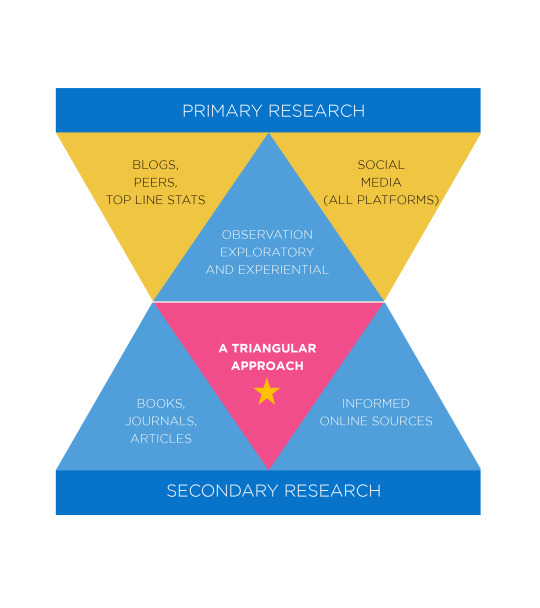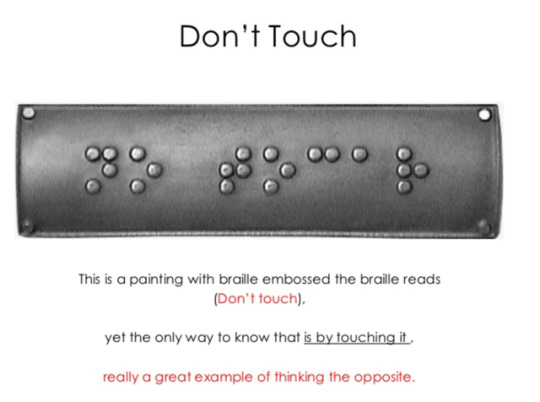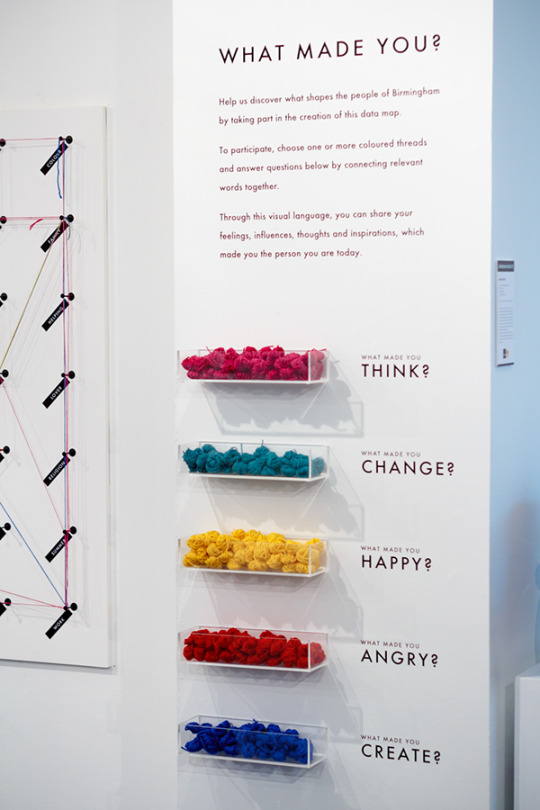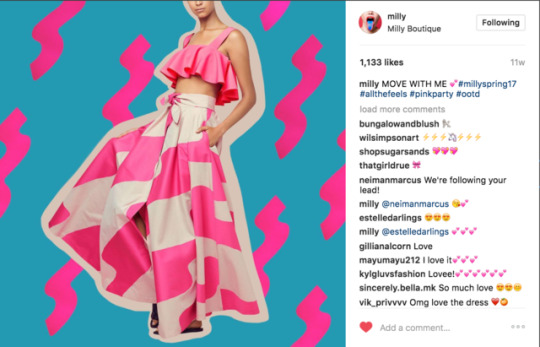Text
Walt Disney’s Civilizing Mission: From Revolution to Restoration
When we look at childhood fairy tales, we first focus on the magic - the happy endings… But are these tales a realistic depiction of what real life looks like? Do happy endings exist? Or is it just an unrealistic, unachievable picture that has been painted at a young age, setting unrealistic standards?
In Jack Zipes’ book, Fairy Tales of Subversion, Zipes (2007) argues that Walt Disney has created this fairy tale world that tells the perfect love story, where the beautiful and noble runs off and live happily ever after, but Zipes does not see this as a positive thing. In fact, he has quite a few issues with Disney’s approach to his work.
The first issue Zipes points out, is that Disney took a lot of the older fairytales, many of them written by The Brothers Grimm, and robbed them from their originality, ultimately leaving the reader/viewer with a tale that that reinforces the patriarchal symbolical order based on rigid notions of sexuality and gender. (Zipes, 2007: 194)
The second thing he points out is that although Walt Disney was a masterful coordinator, who could pull on the strengths of others to bring his tales to life through amazing illustration, animation and artistry, he always took the credit for all the work. This can also be seen in the way he depicts the male leads in his films. They always show up once the work has been done, and whisks the princess off to the castle where they live happily ever after.
Zipes (2007:196) also points out that the male leads in Disney’s fairytales are mostly timid, pathetic, and is in no way a match against the villains in the tales, such as the witches for example, who are often played by females.
In Zipes’ opinion, Disney’s pictures deprive the audience now of visualising their own characters, roles, and desires. Instead of celebrating the characters for their differences through the lens of the child in us, he began insisting on tam-ing if not instrumentalising the imagination to serve the forces of law and order. (Zipes, 2007: 200)
Let’s look at Snow White for example. In the original tale, the evil queen appears only once, where she hands Snow White the poisonous apple. In Disney’s version, right from the beginning, the queen is jealous of Snow White’s beauty, leading to her wanting to kill Snow White. Not only does he introduce the theme jealousy, but he also pits women against each other, enforcing this idea that you should always be prettier than someone else (mirror mirror on the wall).
It is only in more recent years where the animation industry were able to step up and do something to flip the narrative. Look at Shrek (2001) by Dreamworks for example. The two Shrek films make obvious reference to the Disney Corporation and ideological world to critique and question it. (Zipes 2007: 211) It is enlightening that the ogre and the princess fall in love, and live happily ever after in their “uglier” states.
I believe that we need more films like Shrek, celebrating the outcasts for who and what they are, where we can see them as beautiful instead of different.
Through Disney’s attempt to “cleanse the world”, we have lost so much of what makes it real, special and unique, leaving young children with unachievable standards of what life should be.
Morel of the story - we need more ogres!
References:
Zipes, Jack. (2007) Fairy Tales and the Art of Subversion, Taylor & Francis Group. ProQuest Ebook Central, https://ebookcentral.proquest.com/lib/herts/detail.action?docID=1024460.
0 notes
Text
Critical Analysis - ‘Cinderella did not speak up’
An article by VIII.Su-Jeong Wee, Kyoung Jin Kim & Youngmi Lee (2019) ‘Cinderella did not speak up’: critical literacy approach using folk/fairy tales and their parodies in an early childhood classroom, we take a close look at childhood folk/fairy tales and their parodies to gain a better understanding of how five-year-old students perceive these tales. The study aims to establish whether or not the students are able to alter their understanding of these storylines, and open themselves up to alternate solutions and endings. Through a critical literacy approach, a Korean class of 5-year-old children started to challenge social norms and stereotypes, and come up with their own versions of stories based on their own backgrounds and circumstances.
As part of the critical literacy approach, parodies of certain popular fairy tales were studied to start opening up the minds of the children, encouraging them to look at things from different perspectives. The reading was followed by activities such as discussions, writing and sketching, to ensure that they critically reflect on the reading materials.
Through the medium of folk/fairy tales and parodies the critical literacy approach was examined, and Wee, Kim & Lee (2019) found that the participating children were able to accept multiple perspectives and consider characters in ways that was not highlighted in the original stories. Through this process the children learnt to challenge the socially dominant ideas and gender stereotypes.
They found that it is extremely important for teachers to pay close attention to how they interact with young children. Through asking critical questions, children are able to examine their own insights and those presented in texts. (Wee et al. 2019)
When children question texts connecting to their experiences and beliefs, they could be more deeply engaged in critical analysis (Simpson, 1996).
It is important for educators to guide children’s own interests and questions in critical ways and offer series of literacy activities that encourage children to ‘perceive critically the way they exist in the world in which they find themselves. (Freire, 2000, p.83)
With this study, Wee et al. (2019) proved that teachers do not always need to limit the stories and books they teach their kids to topics around social issues, and that these social issues can be addressed through critical literacy. By putting the children in charge of what happens, you are able to identify the issues that surrounds them in their day-to-day lives, offering alternate ways of connecting with them.
Sinno, Charafeddine and Mikati (2012) argue that Early Child Development interventions have been developed with the aim of improving the overall function of children through education, and are based on the fact that young children respond best to specific modalities designed to encourage and stimulate their development process. This supports the work of Wee et al. (2019), stating that children are enriched by well-planned and connected activities, and through this, their understanding of social issues can be even further developed.
This article was written in 2019, and is just as relevant today as it would have been in 1950, and as it will be in 2025. Children’s foundations are laid when they are young (between 0-5 years), and it is important to educate them at this level and help them understand that everyone’s worlds look different.
Being able to understand the social issues that surround yourself, as well as the people around you is and will always be extremely important. It puts you in a position of understanding and sets you up to function in a society with respect.
Through the use of data collection such as video recordings of the class activities, interviews with the children and teachers, observational field notes and informal notebooks including memos, the authors were able to capture enough data to support a fact-based argument.
Video recordings were transcribed right after recording sessions to ensure that the sessions are fresh in the researchers mind, and they were able to analyse details like facial expressions and physical gestures of the participants in order to draw their conclusions.
The data analysis was conducted in three phases, adopting Emerson, Fretz, and Shaw’s (1996) coding methods. In the first phase, a preliminary coding was performed of all the collected data, allowing the researchers to reach agreement through discussion to verify and validate the data analysis (Golafshani, 2003)
In the second phase, meaningful episodes from each literacy activity were grouped and given descriptive codes. Through repetitive reading of transcripts, they were able to find some core themes such as perspective, stereotypes and social norms, and further investigated how a selected theme was related to other themes (Wee et al. 2019).
Wee et al. (2019) goes on explaining the third phase, where comparative methods were employed among the different data sources in order to check the consistency of the information. In addition, a member check (Kirk & Miller, 1986) was conducted through sharing their analysis with other professionals in the fields of early childhood and literacy education to confirm validity of the categories and themes.
Exchanging ideas enabled a deeper consideration and understanding of the data as well as an analysis that provided alternative interpretations.
Wee et al. (2019) used a combination of neutral and emotional words in their writing. Because the topic is children, it’s almost vital to use language that is easy to understand and digest. Emotional writing is used when talking about interacting with the children, and a higher academic tone is used when analysing the research and data based aspects of the work.
This article was written from a critical standpoint, setting out to prove an outlined theory through several lenses and processes that was planned out in advance.
The article chose to focus on social issues that were brought up by the subjects, rather than the ones that seem relevant to people in general. For example, racial issues that came up in the classroom were viewed from the children’s perspectives and were analysed in the form they took when they came up in the follow-up activities, rather than the overall view we have surrounding racism as adults.
I accept the arguments presented by the authors of this article. Through critical analysis and data collection, it has been made clear that there’s a lot of merit in what they are saying, and I agree that through challenging children to empathise with others and to understand where they come from, we can set them up for a brighter future based on respect for one another.
References:
Emerson, R., Fretz, R., & Shaw, L. (1996). Writing ethnographic fieldnotes. Chicago, IL: University of Chicago Press.
Freire, P. (2000). Pedagogy of the oppressed. New York, NY: Continuum.
Golafshani, N. (2003). Understanding reliability and validity in qualitative research. The Qualitative Report, 9, 597–607.
Kirk, J., & Miller, M. L. (1986). Reliability and validity in qualitative research. Beverly Hills, CA: Sage Publications.
Kim, Y.-M. (2015). Connecting folk talks and parodies in primary English teaching: Focusing on literacy learning and critical thinking skills (Unpublished Master Thesis). Korea National University of Education, Cheongju.
Simpson, A. (1996). Critical questions: Whose questions? The Reading Teacher, 50(2), 118–127.
Sinno, Durriyah, et al. Enhancing Early Child Development: A Handbook for Clinicians, Springer New York, 2012. ProQuest Ebook Central, https://ebookcentral.proquest.com/lib/herts/detail.action?docID=1081855.
Su-Jeong Wee, Kyoung Jin Kim & Youngmi Lee (2019) ‘Cinderella did not speak up’: critical literacy approach using folk/fairy tales and their parodies in an early childhood classroom, Early Child Development and Care, 189:11, 1874-1888, DOI: 10.1080/03004430.2017.141785
0 notes
Text
The importance of Research in creative practice
Research is the process of looking into a certain topic, as well as closely related topics in order to get a better understanding of the subject matter you are working with.
In an article about Research as Creative Practice, Stancliff and Goggin (2015) argues that there are two metaphors when it comes to successful research - the geography of questions, and joining conversations. By applying these metaphors, students learn that research, and the writing that emerges from it, creates knowledge rather than just just demonstrate that they know something someone else created.
In-depth research can reveal strengths and weaknesses at an early stage of your work, and allow you to push into your findings on the right trajectory.
The Triangular Research Approach:

PRIMARY RESEARCH
In this first stage, the aim is to keep your research as wide as possible, looking into a wide variety of thoughts, theories and visual inspiration in order to gain a better understanding of where your interests lie.
At this stage, I am not to worried about the deeper facts and influences that might inspire my work, but rather the top-line info that attracts me.
SECONDARY RESEARCH
In the second phase it is time to start critically evaluating your thoughts and notes to identify where the potential areas of further investigation lies by identifying more in-depth sources to gain better understanding of your topics.
It is also the phase where you start eliminating thoughts and ideas that seemed interesting in phase 1, but no longer supports where you are wanting to go with your work.
ACHIEVING A TRIANGULAR RESEARCH APPROACH
By pushing into your findings from phase 1 and 2, you are able to come up with a body of research that is focused while checking all the important boxes and aims to achieve your research goals.
Questions will start to arise, allowing you to gain new insights and findings that you can only achieve when truly understanding the subject matter you are working with, and what your thoughts, opinions and theories are coming out of the process.
Sources:
STANCLIFF, M. and GOGGIN, M.D., 2015. Research as Creative Practice: Two Metaphors for Teaching and Learning. English Journal, 105(2), pp. 27-33.
0 notes
Photo

This is a really good example of how the creative process works.
If when approaching the sign a blind person has someone next to them telling them to not touch the plate, they will not touch the plate.
If they were alone, they would have to touch the plate in order to know that they shouldn’t if we listen to the people that gives us feedback we can avoid burning our hands.
0 notes
Text
Prepare Prepare Prepare!
“Chance favors the prepared mind” - Louis Pasteur
While working through my resources, I read a lot about how being prepared can really help in a stressful situation like a pitch for a client. If you are well prepared, you will be able to talk in a simple way, that makes sense to both you and your audience. It should never be forced.
In Life’s A Pitch by Stephen Mavity, I read about how your preparation for your pitch starts in your diary right at the beginning. You have to always be sure to give yourself enough time to think, in a place you feel comfortable with, to ensure that you have enough background to speak on a subject confidently.
You should always be prepared for any feedback that could be heading your way, whether it is negative or positive. Ideally, you should be able to respond to each comment with either some reasoning behind it, or with a suggestion as to how you could possibly implement the advice to your work.
In order to always show up as a professional, it has to be clear that we know what we are talking about, and that we have searched wide to come to the conclusions that we have.
Receiving feedback on your work will not always be fun, but what you choose do with it sure can be!
0 notes
Text
Finding Your Rhythm

Being tasked to write a 6 000 word essay about feedback, really tested my skills. One of the things I found most difficult, was finding a storyline within what I wanted to say.
After receiving feedback on my resource list, it was very clear to me that even though I have very strong references, I really had a problem when it came down to getting some sort of structure going. During my research, I read about how creating storyboards could help you communicate information. It is easier for the audience to relate to and follow a story, rather than just being bombarded with information.
I decided to find a storyline within my essay, and started assigning each resource to the one it fits best, which really helped. I decided on breaking it up into three sections:
1. The personal and emotional side to the design process.
2. The feedback process.
3. How to receive feedback professionally.
These three sections form the creative process all the way from start to completion. As I started writing under these headings, imagining my creative process as storyline, the story suddenly became clear, and I was able talk about it confidently.
I would strongly suggest to always look for something in the brief that you personally relate to. Always aim to express yourself simply. Your work is a direct reflection of your passions, interests and experiences.
SHOW IT OFF!
0 notes
Photo

A very interesting and interactive way of giving feedback.
0 notes
Text
Making teamwork-work!
I love working in teams! I find it so valuable to be able to share my ideas, as well as listen to other people’s ideas. Even the smallest comment that may seem invaluable, can trigger an even better idea.
I do however feel there should be a controlled environment in which feedback takes place. My goal with my essay, is to find this environment, and form an opinion on feedback and how I believe it should be handled. I plan on opening my own practise one day, and these systems will play a very important role in the success thereof.
It is very important to remember that our own opinions are not the only ones that carries value. Each input contributes to the success of a project, and that is something that should be celebrated!
0 notes
Text
My Essay Progress
Writing very long essays can become very challenging for me. I am a very visual person, and prefer to create rather than write. I decided to choose a topic I can personally relate to and speak about quite a lot - FEEDBACK!
I am sure I am not the only one with a story or two to tell about feedback, and how it made me feel so small that I wished the earth could swallow me. Then again, I can also tell many stories about times I felt so proud when receiving positive feedback, that I actually pushed so much harder to impress even further!
I am really enjoying looking into other people’s opinions on feedback, and have learnt a lot about different processes and systems during my research.
One book that was particularly interesting to me, was Damn Good Advice by George Lewis. He says that you should ignore ALL feedback. He believes that there’s only one you, and you should trust your gut feeling. Even though I don’t agree with him on this statement, I still feel there is value in what he is saying, and it has been proven more than once, that seemingly weak ideas, end up being one of the best ever and create history.
There is still so many research to do, but this topic has definitely proven to be more interesting than I initially thought it would be!
0 notes
Text
Finding inspiration
Instagram is probably my favourite platform of inspiration. The reason I love this so much, is that without even realising, I am constantly updated with the latest styles and trends, just because like everyone else, I love social media!
There's some really great accounts to follow, some of my favourites include the following:
Michelle Smith: https://www.instagram.com/milly/?hl=en
Jessica Walsh: https://www.instagram.com/jessicavwalsh/?hl=en
Studio Moross: https://www.instagram.com/studiomoross/?hl=en
Have a look, you won’t be sorry! :D
0 notes
Text
Kate Moross-Design Indaba 2017
Looking back at a speech I attended earlier this year, I suddenly remembered some great insights given by Kate Moross, Art Director from London.
Have a look at the end of this link - http://www.designindaba.com/articles/creative-work/things-we-learnt-kate-moross
She spoke about how she handles her own studio, and I agree with her on so many levels. I specifically liked her insights on feedback and how your failures turn into learnings for your whole team.
Enjoy! :D
0 notes
Text
Do we need feedback in the design world?
Hi there,
My name is Elana, and I am a graphic designer based in Jeffreys Bay, South Africa. On this blog, I plan on sharing my design processes, inspiration, feedback, and systems. I also plan on sharing some of my knowledge and findings throughout the years of working in the industry.
I would like to share my initial thoughts on an Essay I’m writing for my studies through The Interactive Design Institute.
The first thing I would like to discuss, is feedback. I am sure many people struggle with this, whether it is good feedback, or bad feedback. It could either mean that you did a great job, or that you have to start over. Which ever the case may be, it is a vital part of communication between designer and client.
I have found that I am sometimes scared for feedback, as I fear criticism, and the thought of having to start over. I also fear the thought of my work not being good enough. Well, this is an absolute lie. Feedback is vital to the design process, and the earlier you share your work, the easier it will be to adapt to feedback.
There are many examples of work either failing, or succeeding because of feedback given. As I am sitting here, I can recall at least twice today where I received feedback.
It is our choice how we react to it. We can either take it, or we could just look the other way. I do however feel, that we should take every piece of feedback received as a guide, whether you agree with it or not. Somewhere out there, someone will agree with the point made.
It is very important that designers understand that every single one of them are unique. This also means that even though you might feel so passionately about a project, it may not translate well to a different designer at all. Always be open minded when designing.
I am looking forward to exploring this topic further.
0 notes
